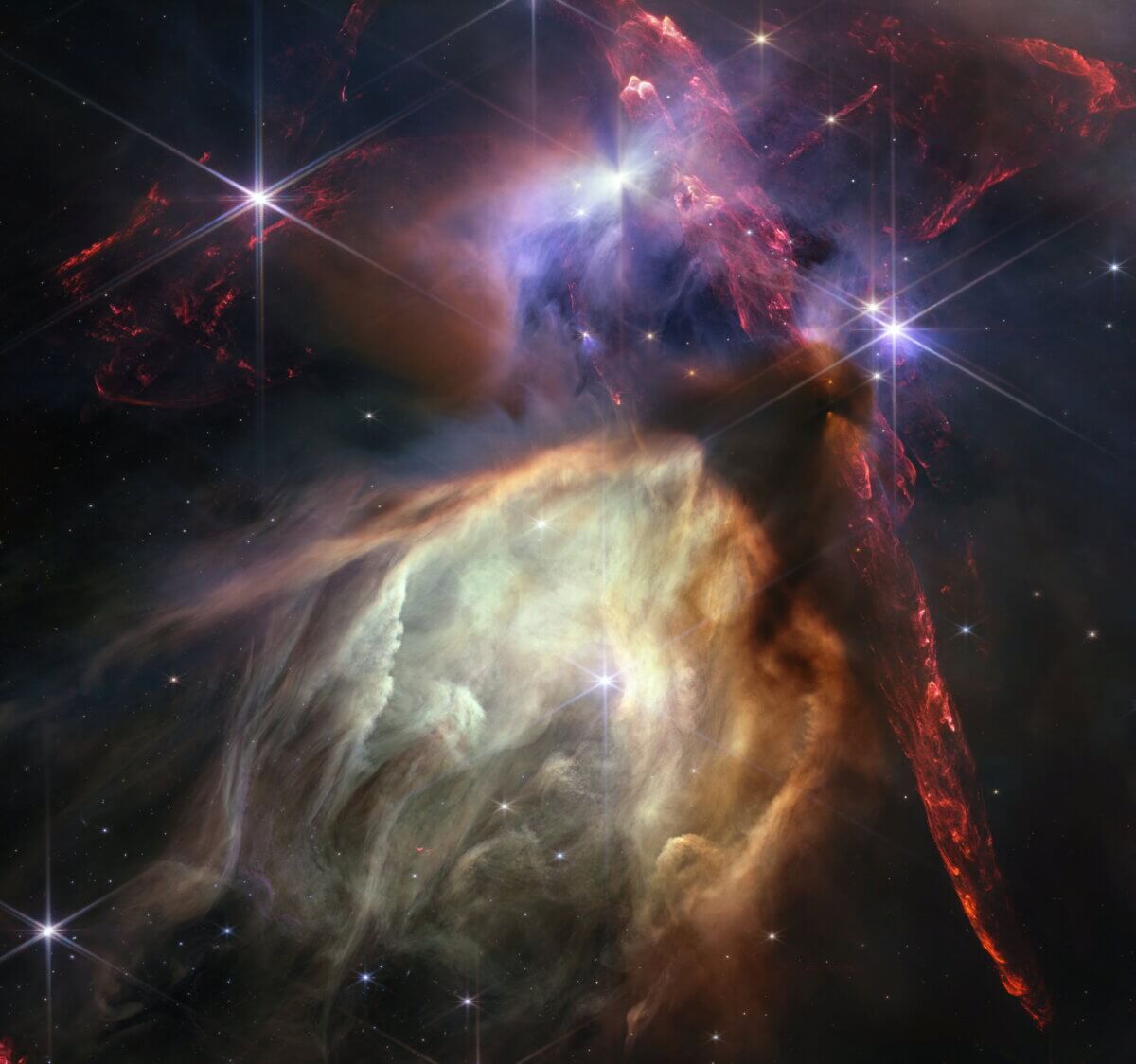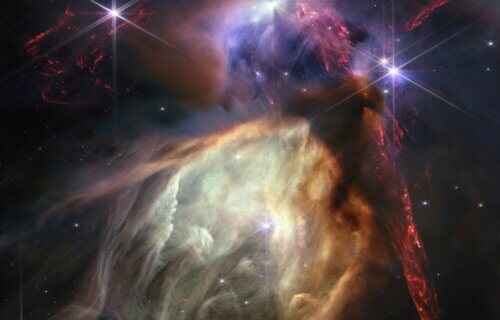GREENBELT, Md. — Scientists are commemorating the first anniversary of the James Webb Space Telescope’s operations with a breathtaking image. To celebrate this milestone, NASA unveiled a vivid image captured by Webb, featuring a small star-forming region within the Rho Ophiuchi cloud complex.
From our immediate cosmic neighborhood in the solar system to distant galaxies near the dawn of time, NASA’s JWST has, in its first year, realized its promise of unveiling the universe in unprecedented ways. The anniversary image showcases star formation in a manner never seen before, abundant with detailed, impressionistic textures. The Rho Ophiuchi cloud complex, the subject of this image, is the closest star-forming region to Earth.

NASA points out that while this is a relatively small, serene stellar nursery, its quiet nature belies the chaotic close-up provided by Webb. Jets bursting from young stars crisscross the image, impacting the surrounding interstellar gas, and illuminating molecular hydrogen, shown in red. Some stars even exhibit the shadow of a circumstellar disk, indicative of future planetary systems in the making.
“In just one year, the James Webb Space Telescope has transformed humanity’s view of the cosmos, peering into dust clouds and seeing light from faraway corners of the universe for the very first time. Every new image is a new discovery, empowering scientists around the globe to ask and answer questions they once could never dream of,” says NASA Administrator Bill Nelson in a media release.
“Webb is an investment in American innovation but also a scientific feat made possible with NASA’s international partners that share a can-do spirit to push the boundaries of what is known to be possible. Thousands of engineers, scientists, and leaders poured their life’s passion into this mission, and their efforts will continue to improve our understanding of the origins of the universe – and our place in it.”

Credits: NASA, ESA, CSA, and STScI
Currently, the James Webb Space Telescope is conducting infrared astronomy. As the largest telescope in space, it is equipped with high-resolution and highly sensitive instruments, enabling it to observe objects too old, distant, or faint for the Hubble Space Telescope to detect.
South West News Service writer Dean Murray contributed to this report.
You might also be interested in:
- JWST discovers pearl-like string of ancient galaxies
- James Webb telescope stunningly updates classic space image of the ‘Pillars of Creation’
- NASA spacecraft travels through solar winds to find source of potential ‘internet apocalypse’

